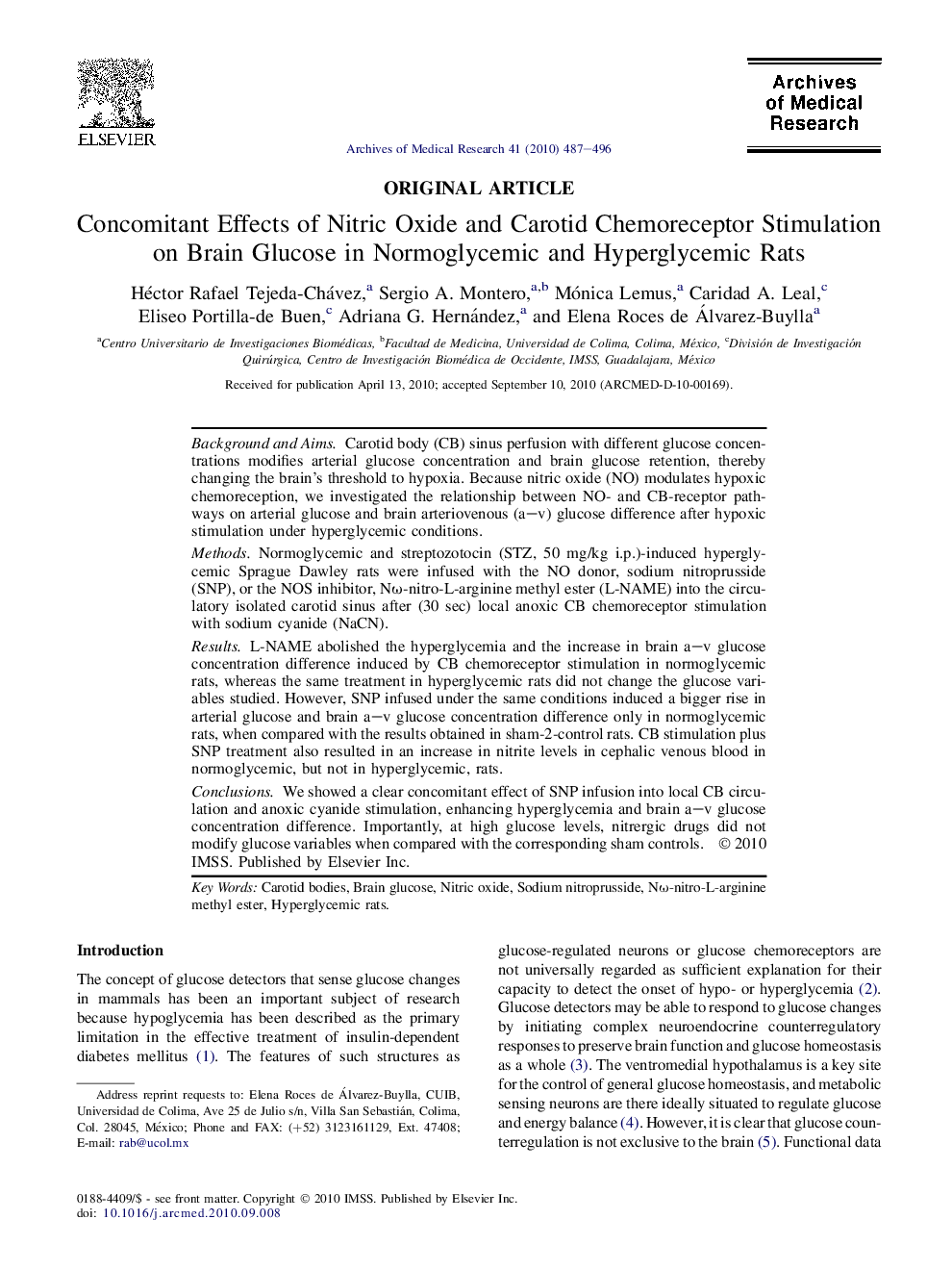| Article ID | Journal | Published Year | Pages | File Type |
|---|---|---|---|---|
| 3446947 | Archives of Medical Research | 2010 | 10 Pages |
Background and AimsCarotid body (CB) sinus perfusion with different glucose concentrations modifies arterial glucose concentration and brain glucose retention, thereby changing the brain’s threshold to hypoxia. Because nitric oxide (NO) modulates hypoxic chemoreception, we investigated the relationship between NO- and CB-receptor pathways on arterial glucose and brain arteriovenous (a–v) glucose difference after hypoxic stimulation under hyperglycemic conditions.MethodsNormoglycemic and streptozotocin (STZ, 50 mg/kg i.p.)-induced hyperglycemic Sprague Dawley rats were infused with the NO donor, sodium nitroprusside (SNP), or the NOS inhibitor, Nω-nitro-L-arginine methyl ester (L-NAME) into the circulatory isolated carotid sinus after (30 sec) local anoxic CB chemoreceptor stimulation with sodium cyanide (NaCN).ResultsL-NAME abolished the hyperglycemia and the increase in brain a–v glucose concentration difference induced by CB chemoreceptor stimulation in normoglycemic rats, whereas the same treatment in hyperglycemic rats did not change the glucose variables studied. However, SNP infused under the same conditions induced a bigger rise in arterial glucose and brain a–v glucose concentration difference only in normoglycemic rats, when compared with the results obtained in sham-2-control rats. CB stimulation plus SNP treatment also resulted in an increase in nitrite levels in cephalic venous blood in normoglycemic, but not in hyperglycemic, rats.ConclusionsWe showed a clear concomitant effect of SNP infusion into local CB circulation and anoxic cyanide stimulation, enhancing hyperglycemia and brain a–v glucose concentration difference. Importantly, at high glucose levels, nitrergic drugs did not modify glucose variables when compared with the corresponding sham controls.
